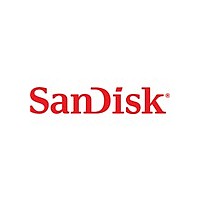SDMJ-32 SanDisk, SDMJ-32 Datasheet - Page 74

SDMJ-32
Manufacturer Part Number
SDMJ-32
Description
Manufacturer
SanDisk
Type
MultiMedia Cardr
Datasheet
1.SDMJ-32.pdf
(91 pages)
Specifications of SDMJ-32
Density
32MByte
Operating Supply Voltage (typ)
3.3V
Operating Temperature (min)
-25C
Operating Temperature (max)
85C
Package Type
MMC
Mounting
Socket
Pin Count
7
Operating Temperature Classification
Commercial
Operating Supply Voltage (min)
2.7V
Operating Supply Voltage (max)
3.6V
Programmable
Yes
Lead Free Status / RoHS Status
Compliant
Revision 1.3
© 2005 SanDisk Corporation
5.17.1
5.14
5.15
5.16
5.17
Read Ahead in Multiple Block Read Operation
Memory Array Partitioning
Card Lock/Unlock Operation
SPI Command Set
Command Classes
period or return an error message. If the host does not get any response within the given
timeout, it ascertains that the card is not going to respond any further and will try to recover
(e.g., reset module, power cycle, reject). The typical access and program times are defined
in Table 5-3.
Table 5-3
In Multiple Block read operations, in order to improve read performance, the card may
fetch data from the memory array, ahead of the host. In this case, when the host is reading
the last addresses of the memory, the card attempts to fetch data beyond the last physical
memory address and generates an OUT_OF_RANGE error. Therefore, even if the host
times the Stop Transmission command to stop the card immediately after the last byte of
data was read, the card may already have generated the error, which will show in the
response to the Stop Transmission command. The host should ignore this error.
Refer to MultiMediaCard Mode section.
Refer to MultiMediaCard Mode section.
The following sections provide valuable information on the SPI Command Set.
As in MultiMediaCard Mode, the SPI commands are divided into several classes, and each
class supports a set of card functions as shown in Table 5-4. The MultiMediaCard/RS-
MultiMediaCard supports the same set of optional command classes in both
communication modes.
specific class, however, are different in the MultiMediaCard and the SPI Communication
modes.
2
Operation
There is only one command class table in the CSD register.
Erase
Read
Write
The read access time is defined as the sum of the two times given by the CSD
parameters TAAC and NSAC. These card parameters define the typical delay between
the end bit of the read command and the start bit of the data block. This number is
card dependent.
The R2W_FACTOR field in the CSD is used to calculate the typical block program time
obtained by multiplying the read access time by this factor. It applies to all write/erase
commands (e.g., SET (CLEAR)_WRITE_PROTECT, PROGRAM_CSD (CID) and block
write commands).
The duration of an erase command will be (order of magnitude) the number of sectors
to be erased multiplied by the block write delay.
Timeout Conditions
2
The available command classes and supported commands for a
5-9
Access and Program Times
MultiMediaCard/RS-MultiMediaCard Product Manual
Chapter 5 –SPI Mode
04/21/05












